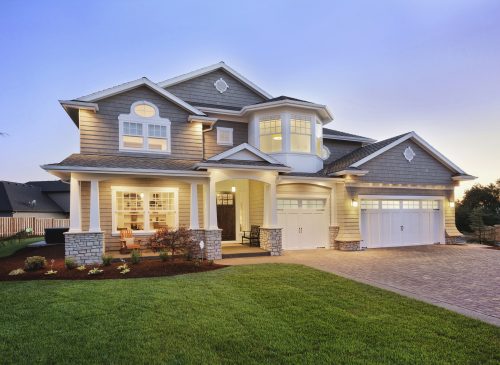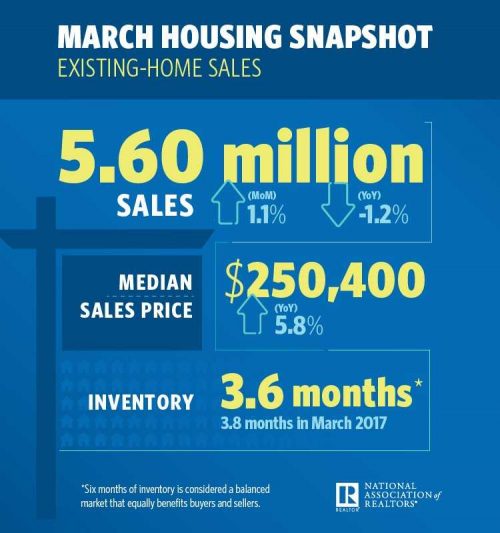
March marked the second straight month of increases for existing-home sales in the country. Total existing-home sales rose 1.1 percent to an annual rate (seasonally adjusted) of 5.60 million, up from 5.54 million in February, according to NAR’s most recent report.
However, even with the month over month growth, existing-home sales are still down 1.2 percent from March of last year.
In March,
- Properties spent an average of 30 days on the market, down from 37 last month, and 34 from March of last year. Half of all homes sold in March spent less than a month on the market.
- The median price for all types of existing-homes was $250,400, up 5.8 percent from $236,000 last March.
- The average commitment rate for a 30-year conventional, fixed-rate mortgage went up to 4.44 percent from 4.33 percent in February, according to Freddie Mac.
- Housing inventory increased to 1.67 million existing-homes, a 5.7 percent increase from last month, and a 7.2 percent decrease from March of last year.
The year-over-year decrease in housing inventory is one of the primary reasons for the decline in existing-home sales from last year. “The unwelcoming news is that while the healthy economy is generating sustained interest in buying a home this spring, sales are lagging year ago levels because supply is woefully low and home prices keep climbing above what some would-be buyers can afford,” said NAR chief economist, Lawrence Yun.
Existing-home sales in the South declined 0.4 percent to an annual rate of 2.40 million, but grew 0.4 percent since last March. The median sales price for an existing home in the region was $222,400 — an increase of 5.7 percent from last year.
In March, first-time buyers made up 30 percent of sales — an increase of one percent from last month, and a decrease of two percent from last March. The annual share of first-time buyers in 2017 was 34 percent, according to NAR’s Profile of Home Buyers and Sellers.
“First-time buyers continue to make up an underperforming share of the market because there are simply not enough homes for sale in their price range,” said Elizabeth Mendenhall, NAR president. “Supply conditions improve in higher up price brackets, which means those trading up should see considerable interest in their home, as well as more listings to choose from during their own search.”

